Page 3 of 3
Re: Astro Photos, Astronomy and The Deep Space
Posted: 01 Dec 2022 17:49
by GJPackerBacker
BF004 wrote: ↑01 Dec 2022 16:30
Similarly, every depiction of a 'asteroid belt' in movies is false. The average distance between objects larger than a grain of sand is like 10's of miles in our asteroid belt. When NASA flies a satellite to the outer solar system, they just go right through it with incident.... yet.
Space is really really fricken big.

Exactly. And that is why we have to use light as a distance measuring tool. Think about it… the sun is 93 million miles away and sunlight takes 8 minutes to reach us on earth.
Re: Astro Photos, Astronomy and The Deep Space
Posted: 07 Dec 2022 13:21
by GJPackerBacker
This is an image of the Needle Galaxy. The galaxy is around 50 million l.y away. Remember the further away from us the more difficult it is to capture detail. We see this spiral galaxy edge on. I like this one because of the many colors present. Red dwarf stars dominate the population distribution. The blue areas in this image (you may have to stretch the image) is where stars are being formed. Other more distant galaxies are also visible in this image.
Re: Astro Photos, Astronomy and The Deep Space
Posted: 07 Dec 2022 18:55
by APB
This stuff is just super fascinating to me. Glad you guys are sharing!

Re: Astro Photos, Astronomy and The Deep Space
Posted: 15 Jan 2023 10:07
by GJPackerBacker
This is the well known Horsehead Nebula. Another object that is found in Orion, the Great Hunter. (You probably will want to stretch the image to see the Horsehead more clearly.) Orion is visible this time of year. I remember when I was a kid learning about locating a few constellations in the night sky. First the Big Dipper, the Little Dipper, the Seven Sisters and Orion. I was amazed at how much of the sky was taken up by each constellation.
The nebula is located just south of Alnitak, the bright star on the left in Orion’s Belt. In this picture Alnitak is the bright blue star left of center. The nebula is about 1375 light years away. Note, not million light years, just over a thousand. It is located in our galaxy just as all of the stars are that we see at night. It is a dark nebula, or cloud of dust, that is illuminated by star formation that is in process in the region. Hubble Telescope has taken some incredible images of the Horsehead Nebula. With a pair of binoculars in a dark sky area it will look like a little diffuse object.
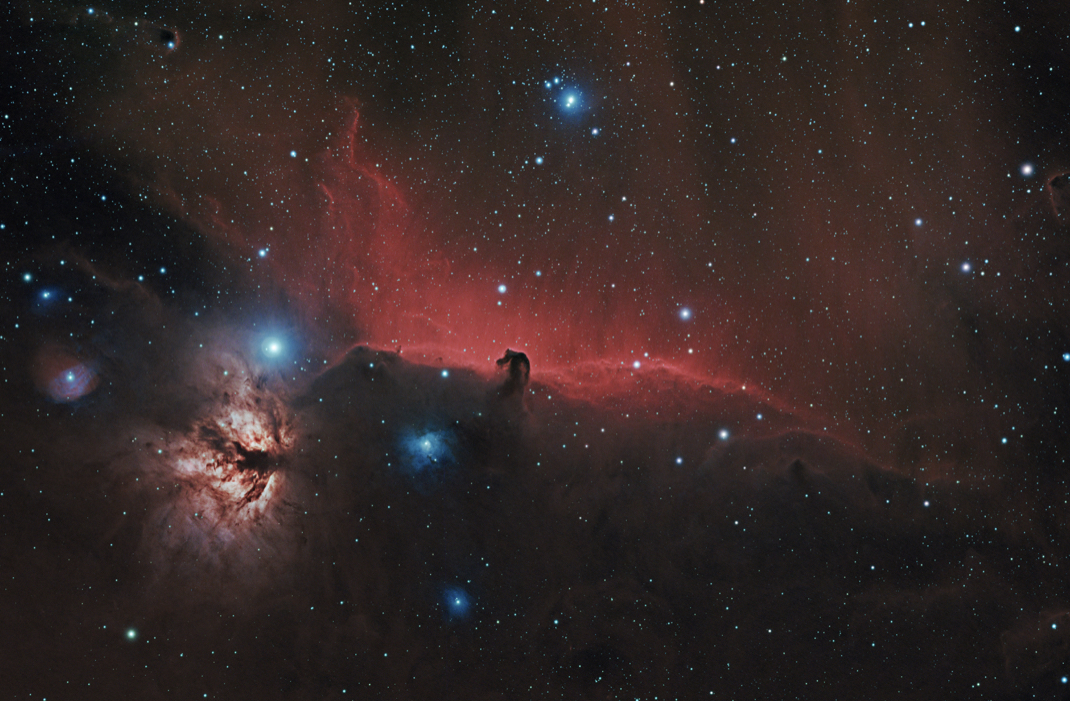
- The Horsehead Nebula
- 0A904B8E-EC46-4673-B997-5FBC26076B81.jpeg (1015.82 KiB) Viewed 18044 times
Re: Astro Photos, Astronomy and The Deep Space
Posted: 18 Jan 2023 15:29
by APB
Should've called it the Dragon's Head Nebula. With that awesome backdrop and the rearing of it's head, it seems more fitting...and dramatic.
Re: Astro Photos, Astronomy and The Deep Space
Posted: 19 Jan 2023 21:23
by GJPackerBacker
APB wrote: ↑18 Jan 2023 15:29
Should've called it the Dragon's Head Nebula. With that awesome backdrop and the rearing of it's head, it seems more fitting...and dramatic.
Thanks Trudge and APB…

Re: Astro Photos, Astronomy and The Deep Space
Posted: 19 Aug 2023 08:01
by GJPackerBacker
It’s been too long since I’ve posted anything here. I’ve been dabbling with obtaining Milky Way images. Different acquisition set up. Here’s one from this summer. Taken in Western CO dark skies.
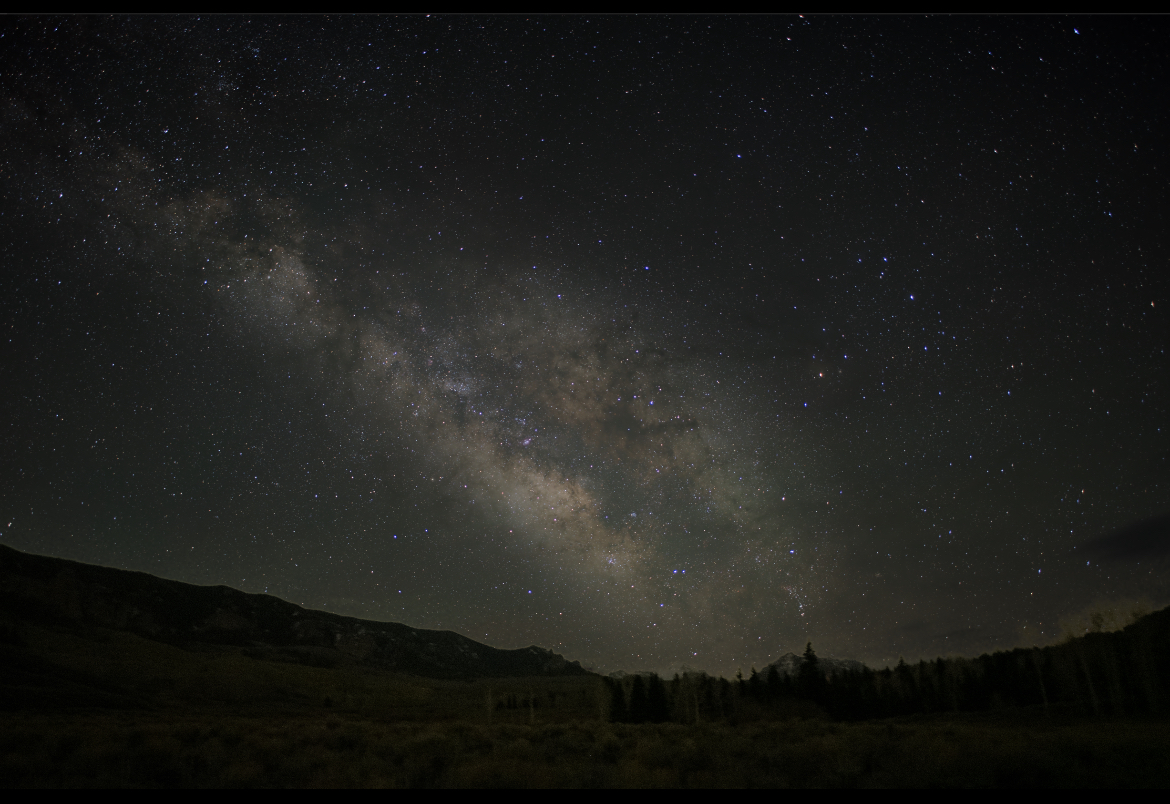
- 2023 Summer Milky Way
- IMG_3645.jpeg (964.82 KiB) Viewed 17942 times
Re: Astro Photos, Astronomy and The Deep Space
Posted: 22 Nov 2023 20:49
by GJPackerBacker
Here are a couple photos taken during the Annular Eclipse on October 14, 2023. If you look closely you will see sunspots in the first image.
These photos were taken with a Nikon Mirrorless and a telephoto lens mounted on a tripod.
My apologies for the different image scaling.
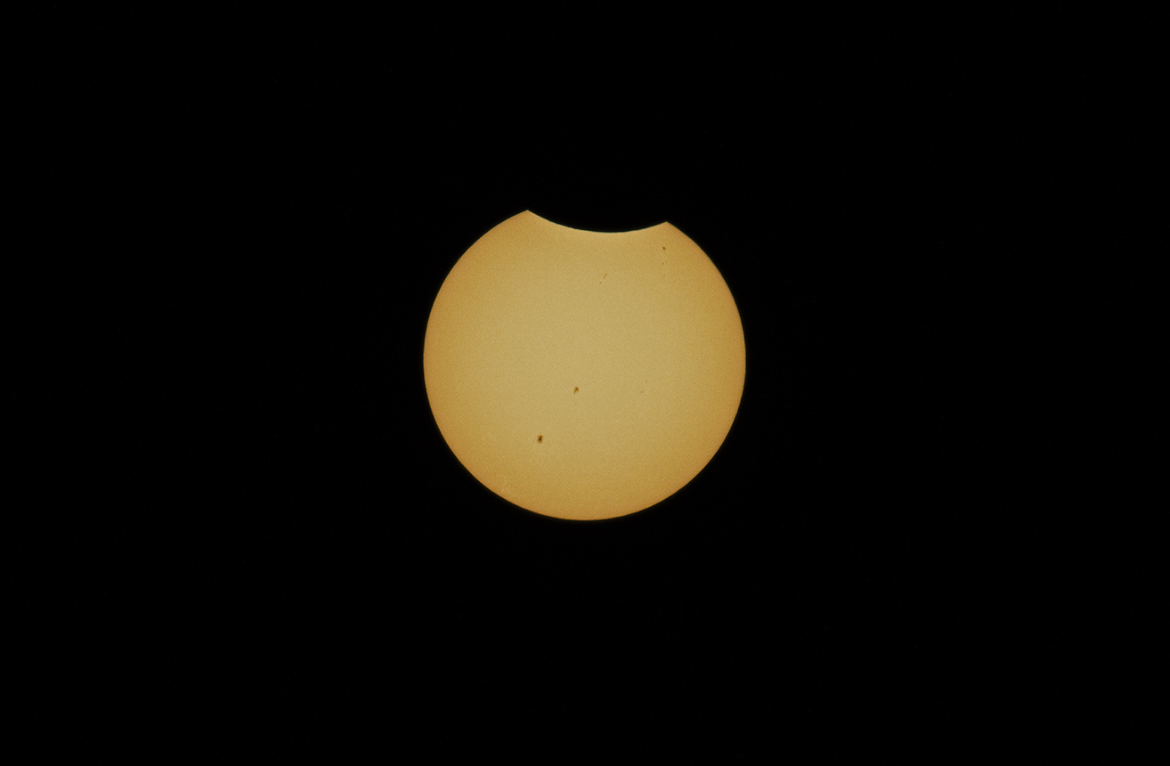
- IMG_5639.jpeg (408.38 KiB) Viewed 16270 times
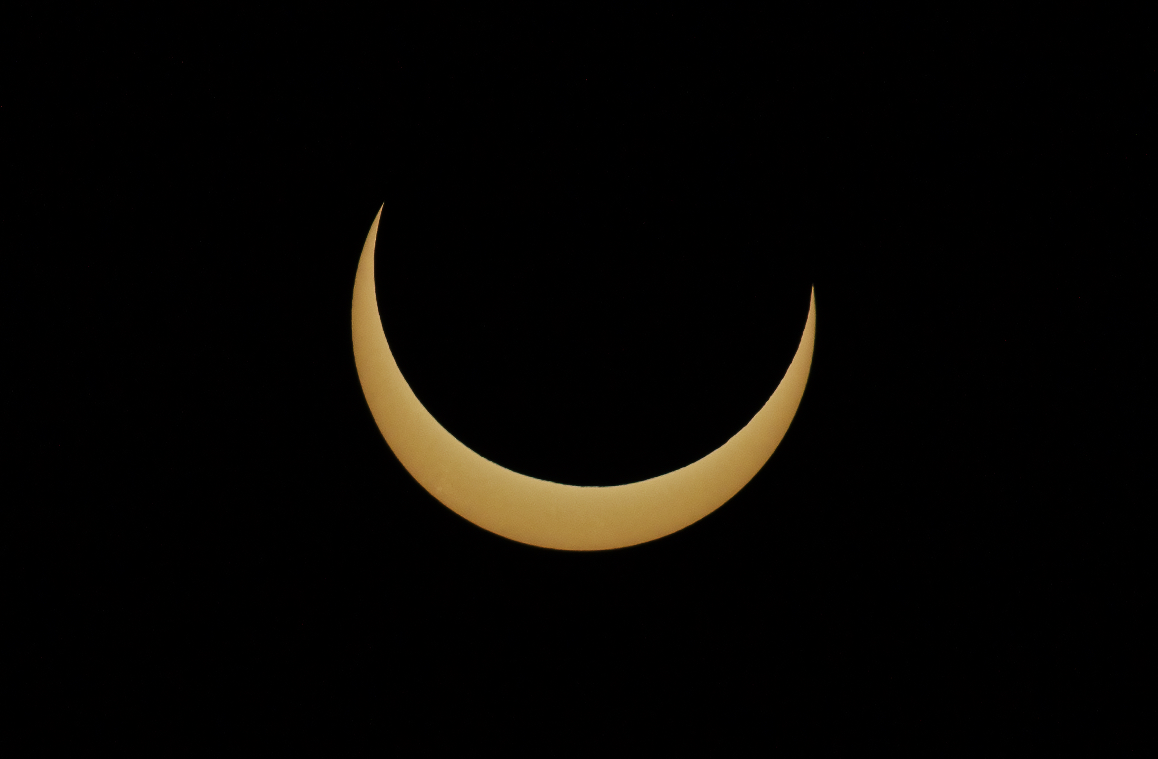
- IMG_5640.jpeg (377.63 KiB) Viewed 16270 times
Re: Astro Photos, Astronomy and The Deep Space
Posted: 25 Nov 2023 16:32
by GJPackerBacker
Solar activity has a maximum that has a cycle between 9 to 14 years. We are nearing a solar maximum. When this occurs the Aurora Borealis increase. There is also a risk that communications on earth can be impacted. This photo was taken today 11-25-23.
Get your camera ready Sal.
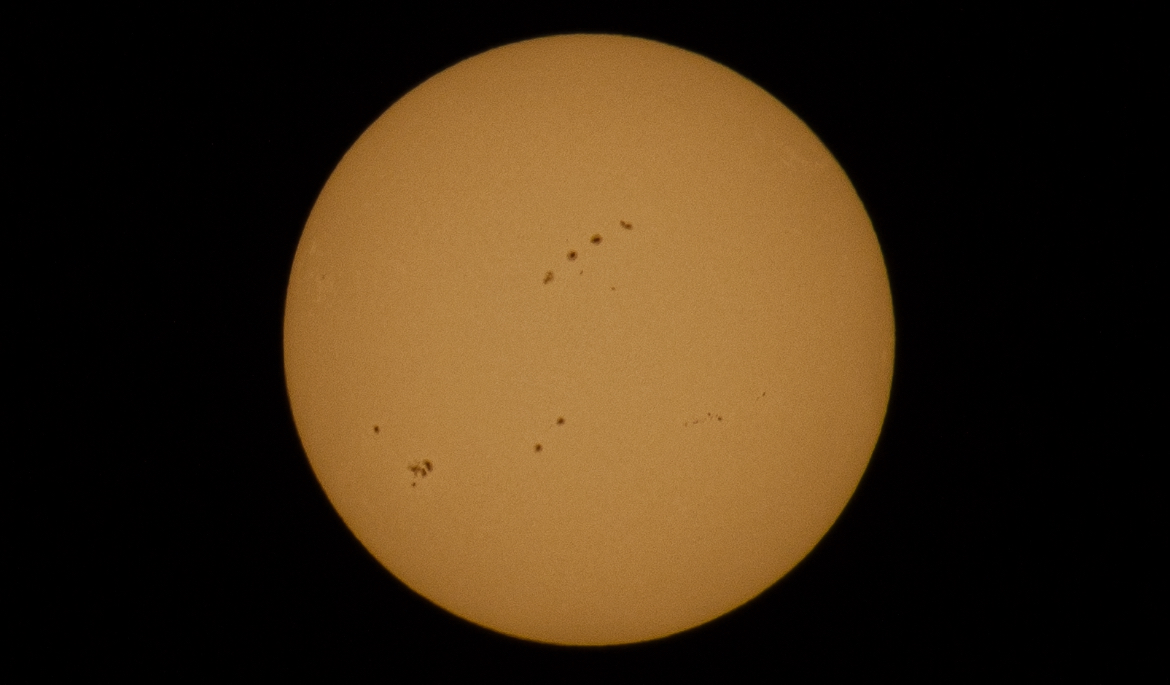
- IMG_5797.jpeg (450.59 KiB) Viewed 15923 times
Re: Astro Photos, Astronomy and The Deep Space
Posted: 30 May 2024 19:51
by GJPackerBacker
Two photos from the April 2024 total eclipse.
The first image is during totality. Obtaining good quality was an incredible challenge due to the clouds. I drove to TX first. Since clouds were predicted I then drove to Arkansas. Still had some upper level clouds that caused problems, but did the best I could with the situation. The second image is a collage of the progression of the eclipse. Notice the clouds in the first frame in the second row. Gives an idea of the density of the clouds and the challenge of the situation.
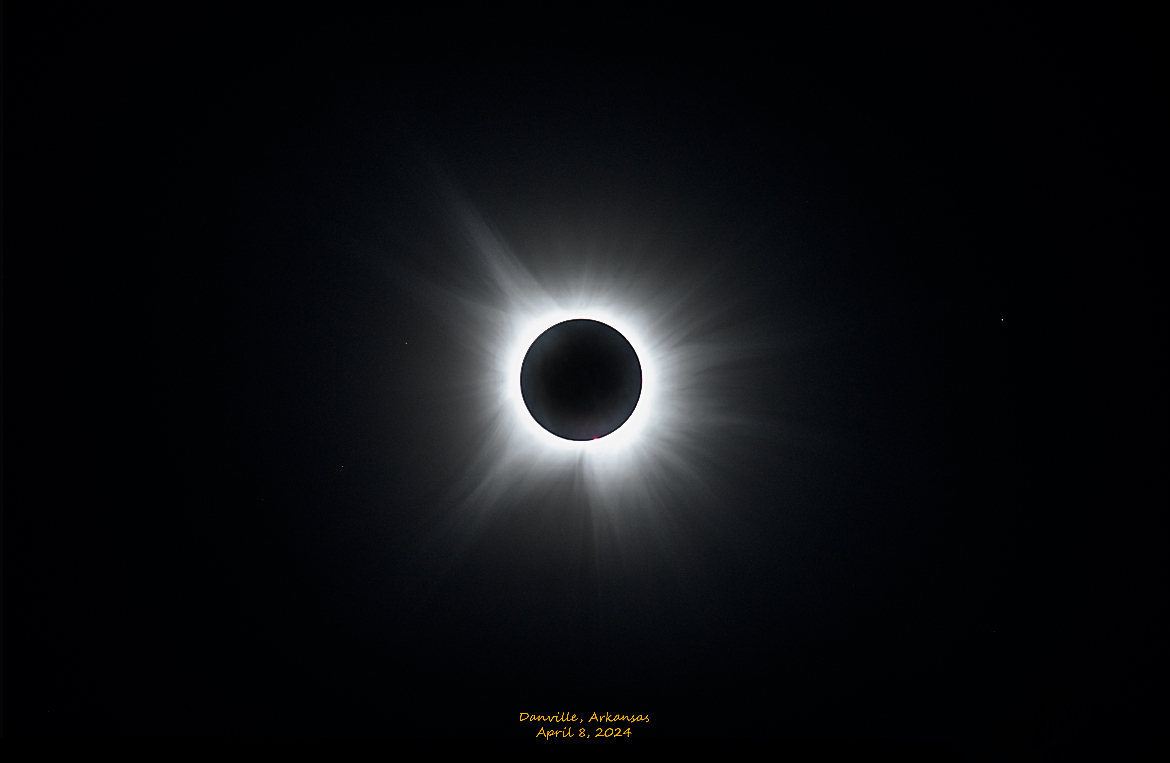
- Totality 4-8-24
- IMG_7898.jpeg (707.85 KiB) Viewed 4558 times
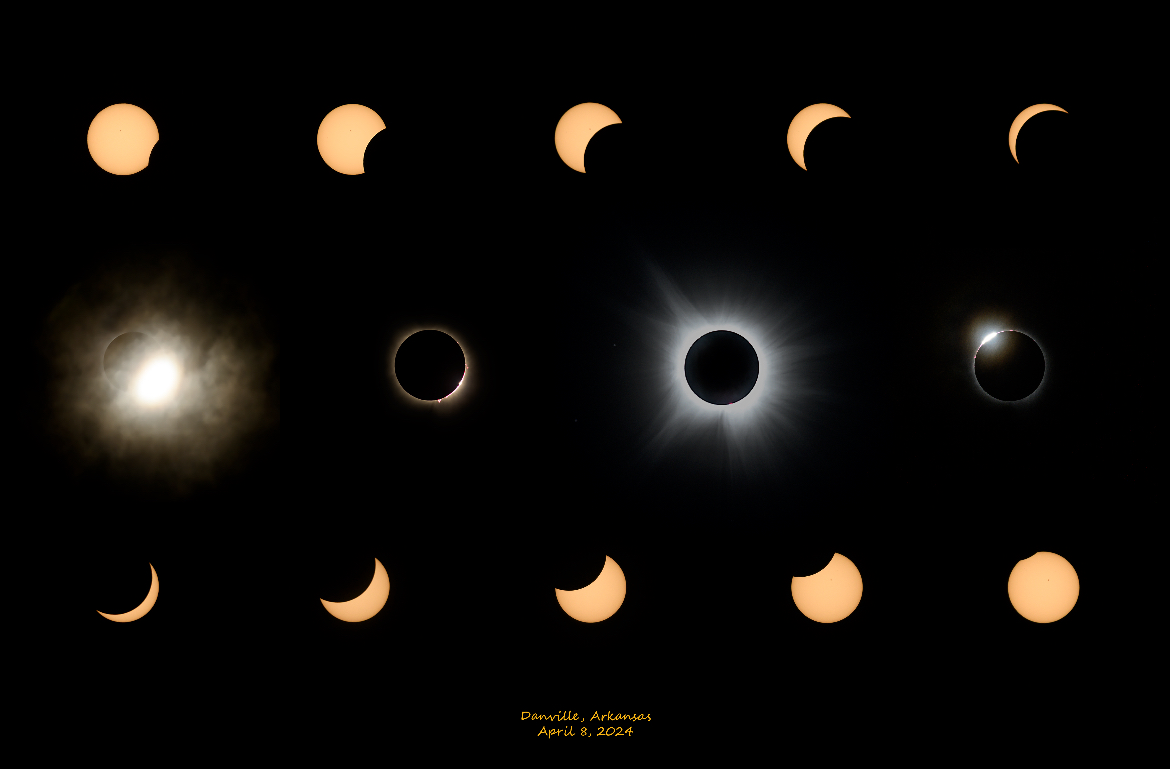
- Totali Eclipse Collage 4-8-24
- IMG_7899.jpeg (265.01 KiB) Viewed 4558 times
Re: Astro Photos, Astronomy and The Deep Space
Posted: 03 Nov 2024 11:04
by GJPackerBacker
This is a 15 sec single frame exposure of comet C/2024 A3. I have a total of 30 minutes LRGB exposures but I have to process the data. Comets are a challenge because they are moving so fast relative to the background star field. The trick is to remove the background stars from all the single frames, stack and align the comet images, then add the starfield background back into the image. I’ll share the integrated image when it is completed.
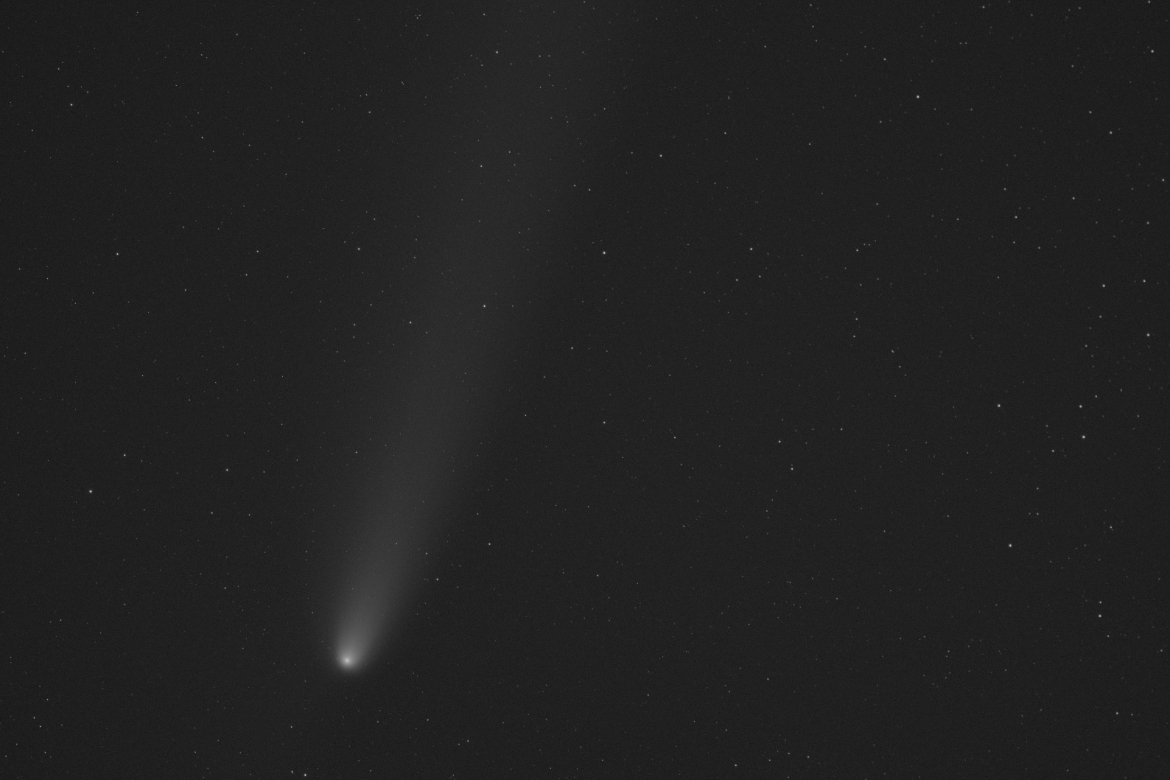
- C/2024 A3
- IMG_9491.jpeg (416.61 KiB) Viewed 3756 times
Re: Astro Photos, Astronomy and The Deep Space
Posted: 03 Dec 2024 20:19
by GJPackerBacker
Here’s the fully integrated image that incudes both the comet and the background starfield. Regrettably, a lot of detail in the comet is lost in the reduced file size shown here. A comet of this magnitude brightness is not common. This image was captured after perihelion, which means after the comet’s path had traversed closest to the sun.
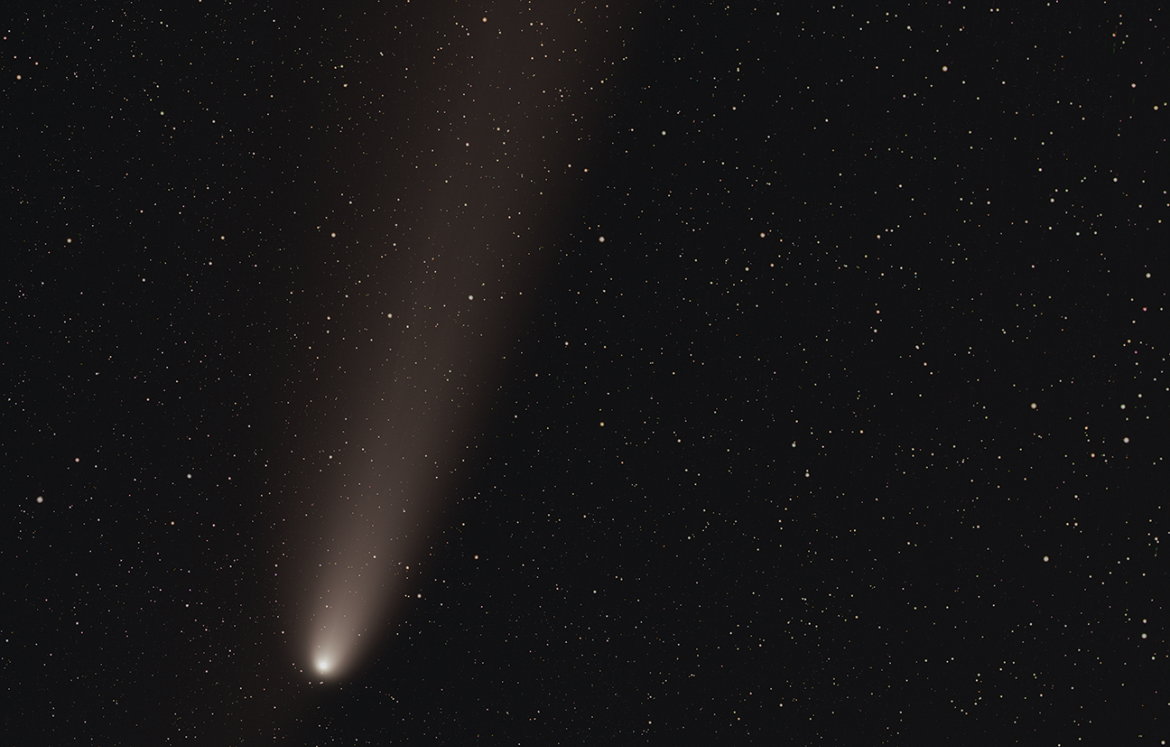
- Comet 2023 A3 October 23, 2024
- IMG_0302.jpeg (884.79 KiB) Viewed 3622 times
Re: Astro Photos, Astronomy and The Deep Space
Posted: 03 Dec 2024 22:21
by salmar80
GJPackerBacker wrote: ↑03 Dec 2024 20:19
Here’s the fully integrated image that incudes both the comet and the background starfield. Regrettably, a lot of detail in the comet is lost in the reduced file size shown here. A comet of this magnitude brightness is not common. This image was captured after perihelion, which means after the comet’s path had traversed closest to the sun.
IMG_0302.jpeg
That's incredible. Hundreds of stars and such a beautiful comet trail.
I printed some HUGE nebula pictures from WBJS (thank the gods for high tech public libraries of Finland), and am making it a project to somehow hang them on my walls this month. The problem is the over 4-meter wide one... No way to frame it. Probably gonna staple the top and bottom to some nice looking wood and let it hang.

Re: Astro Photos, Astronomy and The Deep Space
Posted: 04 Dec 2024 21:22
by GJPackerBacker
salmar80 wrote: ↑03 Dec 2024 22:21
GJPackerBacker wrote: ↑03 Dec 2024 20:19
Here’s the fully integrated image that incudes both the comet and the background starfield. Regrettably, a lot of detail in the comet is lost in the reduced file size shown here. A comet of this magnitude brightness is not common. This image was captured after perihelion, which means after the comet’s path had traversed closest to the sun.
IMG_0302.jpeg
That's incredible. Hundreds of stars and such a beautiful comet trail.
I printed some HUGE nebula pictures from WBJS (thank the gods for high tech public libraries of Finland), and am making it a project to somehow hang them on my walls this month. The problem is the over 4-meter wide one... No way to frame it. Probably gonna staple the top and bottom to some nice looking wood and let it hang.

Thanks!!

What is the WBJS?
Re: Astro Photos, Astronomy and The Deep Space
Posted: 04 Dec 2024 22:08
by salmar80
GJPackerBacker wrote: ↑04 Dec 2024 21:22
salmar80 wrote: ↑03 Dec 2024 22:21
GJPackerBacker wrote: ↑03 Dec 2024 20:19
Here’s the fully integrated image that incudes both the comet and the background starfield. Regrettably, a lot of detail in the comet is lost in the reduced file size shown here. A comet of this magnitude brightness is not common. This image was captured after perihelion, which means after the comet’s path had traversed closest to the sun.
IMG_0302.jpeg
That's incredible. Hundreds of stars and such a beautiful comet trail.
I printed some HUGE nebula pictures from WBJS (thank the gods for high tech public libraries of Finland), and am making it a project to somehow hang them on my walls this month. The problem is the over 4-meter wide one... No way to frame it. Probably gonna staple the top and bottom to some nice looking wood and let it hang.

Thanks!!

What is the WBJS?
That would be somehow "autocorrected" JWST.

James Webb Space Telescope.
Re: Astro Photos, Astronomy and The Deep Space
Posted: 05 Dec 2024 18:58
by GJPackerBacker
Understood. Some great work done by the JWST team.
Re: Astro Photos, Astronomy and The Deep Space
Posted: 13 Mar 2025 19:22
by GJPackerBacker

- 2022 Total Lunar Eclipse
- IMG_8300.jpeg (845.38 KiB) Viewed 1563 times
Get ready for the Lunar Eclipse early March 14, 2025 (around 1AM.). Check for local time of the event.
This image was taken during the May 15-16, 2022 total lunar eclipse. The blood moon is the nickname for the phenomenon observed during a total lunar eclipse. The redness is caused by the sun’s light illuminating the moon after it has refracted through the earth’s atmosphere.
The feature that I particularly like about my photo is that I caught some of the star field in the background.
